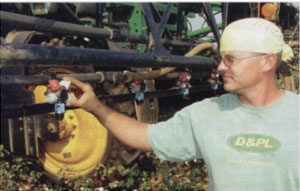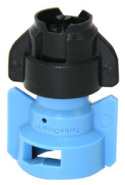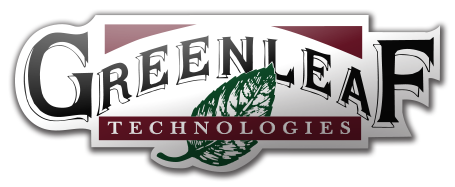Variable-Rate Puts Inputs Where Needed ~ Farm Press
Variable-Rate Puts Inputs Where Needed October 2007
By Elton Robinson
Farm Press Editorial Staff
erobinson@farmpress.com
 For the Isbell family, fourth and fifth generation farmers from Cherokee, Ala., precision agriculture is all about putting inputs where they’re needed, with any yield and cost benefits just icing on the cake.
For the Isbell family, fourth and fifth generation farmers from Cherokee, Ala., precision agriculture is all about putting inputs where they’re needed, with any yield and cost benefits just icing on the cake.
Neal Isbell and his two sons, Todd and Shane, farm 2,700 acres of corn and 1,800 acres of cotton in northwest Alabama. The crop mix is almost an inverse in acreage from the previous year. Plans for next year are to go with a 50-50 rotation.
“Cotton will make corn and corn will make cotton,” Neal says. “We’re looking at a 100-pound increase in cotton behind corn versus cotton to cotton. The cotton also makes us corn.”
The Isbells make variable-rate applications of seed, fertilizer, nitrogen and water in both crops, plus plant growth regulators and defoliants in cotton.
“We’ve been really active in precision agriculture for about 10 years,” Neal said. “One of the first things that attracted us to it was managing our pH. It’s not a glamorous, fancy thing. But pH management has been a real plus for us. The pH in some fields ran from 7.2 to 4.3 in the same field. Back then, we were doing some grid sampling. We actually did one 100-acre field on 1-acre grids. That’s too expensive, but that’s where we started.”
The second or third year in, they started to recognize benefits, including higher yields. Since then, the Isbells moved from grid sampling to zone sampling, which has reduced time and made variability mapping more reliable.
The zones were delineated using aerial imagery from InTime or John Deere Agri Services. The Isbells then fine-tune boundaries and variable-rate prescriptions based on years of experience with their farm fields.
They use the no-cost differential correction system, Wide Angle Augmentation System, but are thinking about going to the more precise RTK (real time kinematic) system next year.
“It’s hard to keep up because technology changes constantly,” Shane says. “That’s the reason we’ve been a little slow on the RTK, it’s been too costly. But the precision ag definitely pays for itself and I feel like the cost of RTK has come down to the point where I think it will pay for itself, too.”
The Isbells credit Auburn University precision agriculture specialist Shannon Norwood for helping them implement variable-rate applications of plant growth regulators and defoliants.
“With variable-rate spraying, we can leave off those areas where we don’t need PGRs and put more out in the bottoms where it belongs,” Shane said. “In irrigated cotton, before we went to precision agriculture and variable-rate, we always had to make two applications to get cotton cleaned up for defoliation. Now we use one variable-rate application, upping the rates in heavy spots.
“Over time, we’ve realized that we’ve been able to (enhance uniformity) over entire fields. We have a lot of rolling ground and we have some fields that you can’t always do that on, but you can make your poor zones perform better.”
Shane does most of the variable-rate spraying on the farm with a John Deere GreenStar 4720. The rig can get over 800 acres to 1,000 acres in a day’s time.
“The sprayer leaves Moline, Ill., with the right pumps, the right valves and the right flow meters for precision agriculture. They knew this technology was coming, so they geared up their spray equipment for it. The old John Deere 4710 we had was not a variable-rate machine. The old pump was not designed to change as fast. The new pump on the John Deere machines will change pressures quickly.”
 Until recently, spray tips had been a limiting factor in variable-rate technology, Shane said. “Normally, a tip will carry a certain amount of gallons at a certain amount of pressure at a certain amount of speed. Our problem is that most of the time we’re trying to run 13 miles per hour to 17 miles per hour. If we want to increase our rate, from 8 gallons per acre to 20 gallons per acre, that’s going to range in pressure from 25 pounds to 125 pounds.”
Until recently, spray tips had been a limiting factor in variable-rate technology, Shane said. “Normally, a tip will carry a certain amount of gallons at a certain amount of pressure at a certain amount of speed. Our problem is that most of the time we’re trying to run 13 miles per hour to 17 miles per hour. If we want to increase our rate, from 8 gallons per acre to 20 gallons per acre, that’s going to range in pressure from 25 pounds to 125 pounds.”
Nothing could handle that range of pressure. “I wrote my prescriptions from 6 gallons to 12 gallons, but when I moved from a dryland field to an irrigated field I might need to go 12 gallons to 16 gallons, I would have to stop and change the tips.”
The Isbells have started using TurboDrop variable-rate nozzles from Greenleaf Technologies. “I’ve gone from 6 gallons to 20 gallons at 17 miles per hour, and the coverage is wonderful. The cost of the tip is a little more, but I would recommend them to anybody. They make a twin-fan and a single fan tip. We’re using the single fan tip.”
The Isbells are also experimenting with variable-seeding in corn and cotton, Neal noted. “We know the corn variable-rate seeding is working for us, but we’re not sure about cotton. We are varying seeds per acre in corn from 24,000 seeds per acre to 38,000 seeds per acre in some low spots. The prescription is based on soil type, soil samplings, topography, yield maps and our knowledge of individual fields.”
Putting inputs where they’re needed goes for water too. This year, the Isbells retrofitted one of their center pivot irrigation systems with GPS and can now do variable-rate irrigations.
The variable-rate application uses a combination of pivot speed and cycling individual sprinklers on and off to deliver precise amounts of water to grids within the circle. For example, if an entire zone calls for 50 percent less water, the nozzles will remain on, but the pivot will double its speed through it. The Isbells are working with Calvin Perry, research and Extension engineer, University of Georgia, who helped developed the technology.
“We think it’s saving us water and environmentally, we’re not wasting water. It’s another step in precision agriculture.”
The Isbells believe they’re seeing some reduced costs, higher yields and some reduction in chemical use with their variable-rate applications, “but to us, it’s more important to put the chemistry or the input where it belongs instead of making a blanket application,” Neal said.
“I’m very fortunate to be able to get up every morning and go to work with my two sons. We’re trying to do a better job, to stay in business. Precision agriculture is one of the things that is going to keep our farming operation up-to-date. In the future, it’s going to be more and more important. People who don’t keep up are the ones who are going to go by the wayside. We don’t want to be one of those folks. This is a fifth generation farm and we want to see it continue.
“There was a time when you could choose between leaded and unleaded gasoline,” Shane said. “You can’t choose anymore. That’s what precision agriculture is all about. You have a choice now, but you may not have that choice in the future. Precision agriculture is where it’s headed.”
